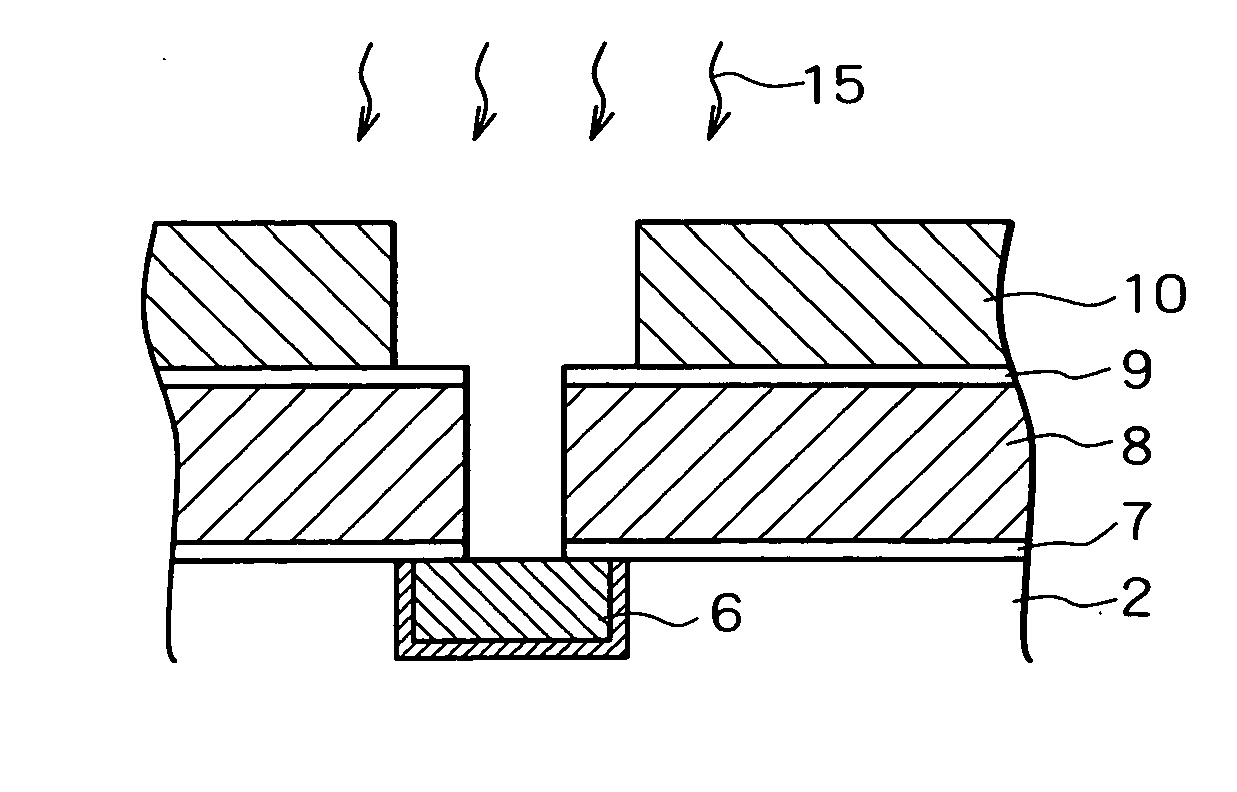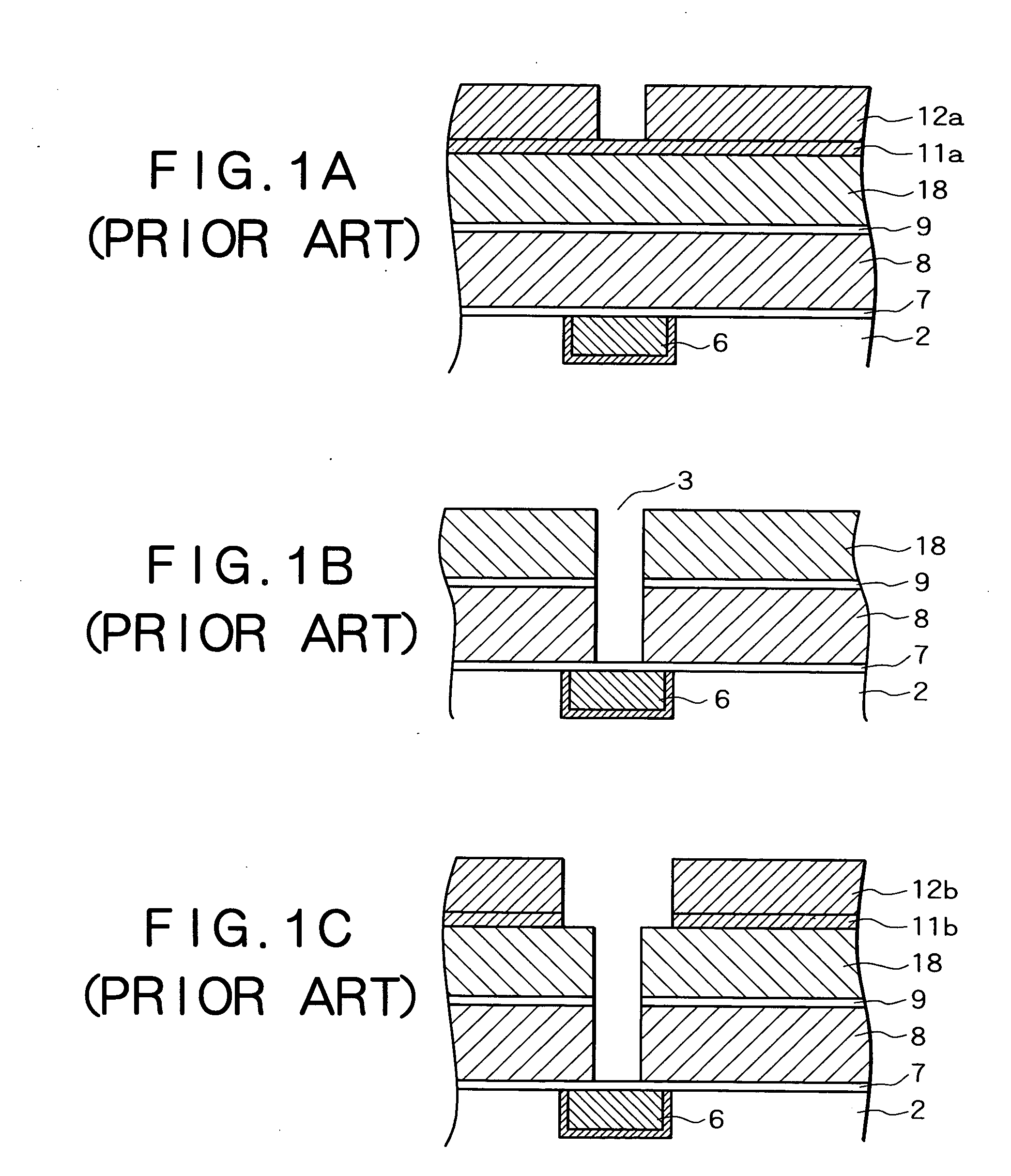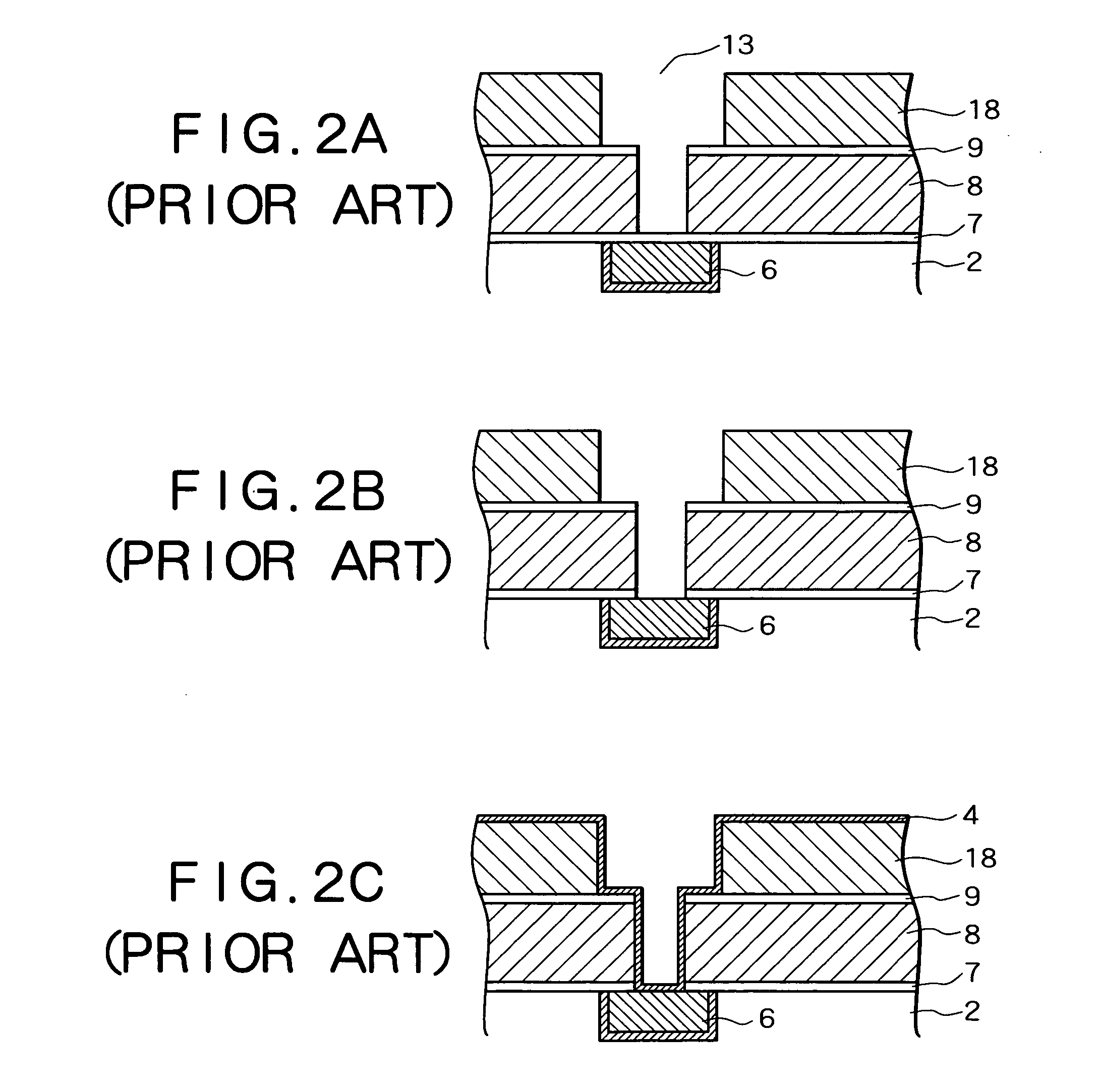Manufacturing method of semiconductor device
a manufacturing method and semiconductor technology, applied in semiconductor devices, semiconductor/solid-state device details, electrical devices, etc., can solve problems such as film separation, interconnect delay, and reduction of interconnect capacitance, so as to prevent film separation, improve the adhesion of low dielectric film to the barrier metal, and improve the reliability of the damascene process
- Summary
- Abstract
- Description
- Claims
- Application Information
AI Technical Summary
Benefits of technology
Problems solved by technology
Method used
Image
Examples
first example
[0081] Firstly, a dual damascene process according to a first example of the invention will be explained with reference to FIG. 7A through FIG. 9C. FIG. 7A through FIG. 9C are cross sections showing the step-by-step sequence of a via first process to which the structure and the plasma treatment of the invention are applied.
[0082] Initially, as shown in FIG. 7A, after a lower layer wiring 6 made of Cu, Cu alloy or the like is formed in a substrate 2 through a known method, a first etching stopper film 7, a first interlayer insulation film 8, a second etching stopper film 9, and a second interlayer insulation film 10 are formed sequentially from bottom to top in certain thickness through the CVD method, the plasma CVD method, etc. A film that can achieve the effect of the plasma treatment of the invention can be any low dielectric film containing hydrophobic groups having a large molecular structure like MSQ that contains methyl groups, and it may be MHSQ, SiC, SiCN, SiOC, SiCOH, etc...
second example
[0094] A dual damascene process according a second example of the invention will now be explained with reference to FIG. 10A through FIG. 13B. FIG. 10A through FIG. 13B are cross sections showing the step-by-step sequence of a dual hard mask process to which the structure and the plasma treatment of the invention are applied.
[0095] Initially, in the same manner as the first example above, as shown in FIG. 10A, after a lower layer wiring 6 made of Cu, Cu alloy or the like is formed in a substrate 2 through a known method, a first etching stopper film 7, a first interlayer insulation film 8, a second etching stopper film 9, and a second interlayer insulation film 10 are formed sequentially from bottom to top through the CVD method, the plasma CVD method, etc. Then, in this example, a first hard mask film 16 and a second hard mask film 17 to be used as an etching mask for a wiring trench pattern are deposited on these films.
[0096] This example will also describe a case where MSQ is u...
third example
[0108] A single damascene process according to a third example of the invention will now be explained with reference to FIG. 14A through FIG. 17C. FIG. 14A through FIG. 17C are cross sections showing the step-by-step sequence of the single damascene process to which the structure and the plasma treatment of the invention are applied.
[0109] Initially, as shown in FIG. 14A, a first etching stopper film 7 and a first interlayer insulation film 8 are formed sequentially from bottom to top in certain thickness atop a lower layer wiring 6 through the CVD method, the plasma CVD method, etc. Then, after a first reflection preventing film 11a to be used to control reflection of exposing light is deposited on the first interlayer insulation film 8 in a thickness of approximately 50 nm, chemically amplified resist to be used to form a via hole pattern is applied thereon in a thickness of approximately 500 nm, which is subjected to exposure and development through ArF photolithography. A first...
PUM
| Property | Measurement | Unit |
|---|---|---|
| power | aaaaa | aaaaa |
| thickness | aaaaa | aaaaa |
| thickness | aaaaa | aaaaa |
Abstract
Description
Claims
Application Information
 Login to View More
Login to View More - R&D
- Intellectual Property
- Life Sciences
- Materials
- Tech Scout
- Unparalleled Data Quality
- Higher Quality Content
- 60% Fewer Hallucinations
Browse by: Latest US Patents, China's latest patents, Technical Efficacy Thesaurus, Application Domain, Technology Topic, Popular Technical Reports.
© 2025 PatSnap. All rights reserved.Legal|Privacy policy|Modern Slavery Act Transparency Statement|Sitemap|About US| Contact US: help@patsnap.com



